A-20G night intruders
On 25 October 1943, the 113 PNOB (Regiment of Night Hunter-Blockers) was created inside the ADD (Long Range Aviation) as an unit of night fighters/intruders to escort the night bombers and suppress the AA defenses. The unit was attached to the 4 GAK (Guards Air Corpus) of ADD, equipped with B-25 Mitchell that were apt for long range night bombing.
The unit was made Guards as 27th Guards Aviation Regiment of Long-Range Night Hunter-Blockers on 10 January 1944. The unit was equipped with A-20G, for the most of the G-1 series armed with four 20 mm guns in their nose, and often with underwing rockets, not visible on available photos. The emblem of the planes of the unit was a white lightning on the sides of the nose.
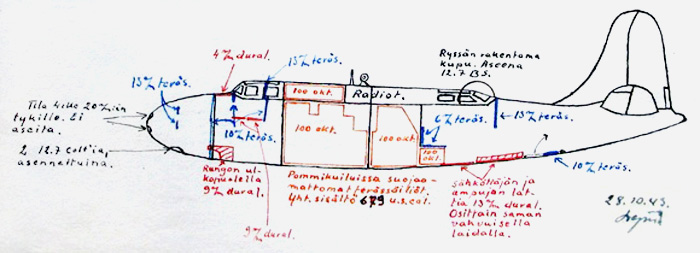
These interesting sketches were made by a Finnish technician in October 1943. They depict the internal layout of a Soviet A-20, probably a night intruder of ADD because the 20 mm guns are describes.
The drawing puts into evidence the steel armour, the dural armors and the fuel tanks. The whole bombs bay was occupied by fuel tanks.
All the explosive load of the plane was external; it could have been equipped with underwing rockets.
Drawing from https://www.flightforum.fi/topic/30561-douglas-a-20-havoc-l%C3%B6ytynyt/#comment-735317 via Tapani Tuomanen
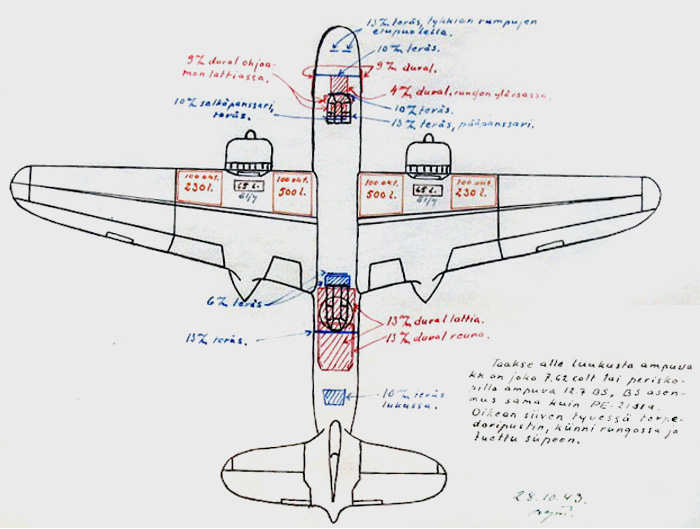
'White 12'
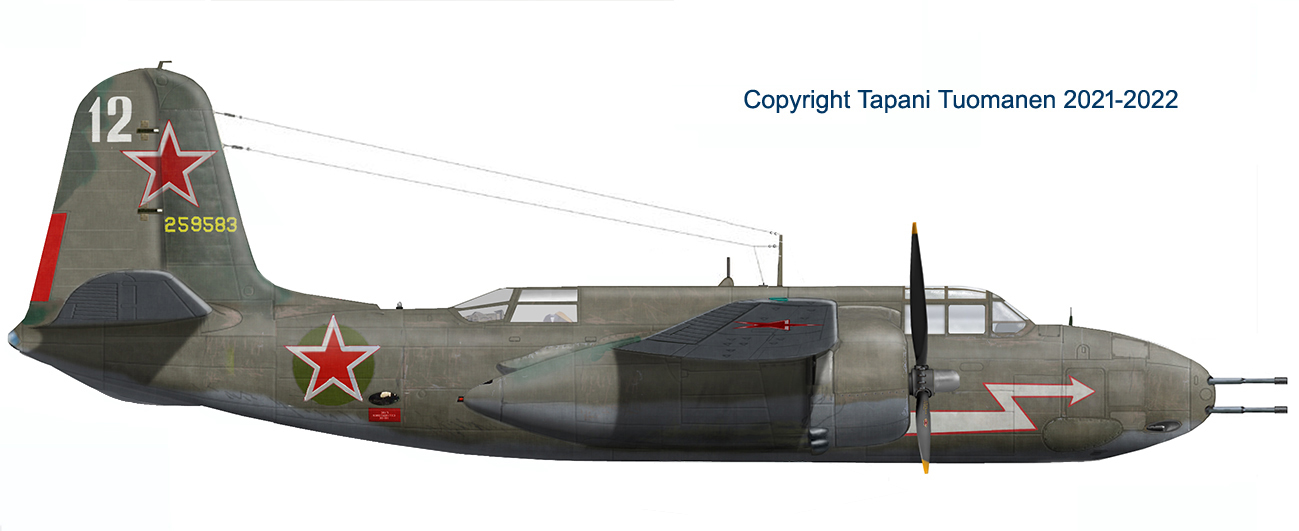
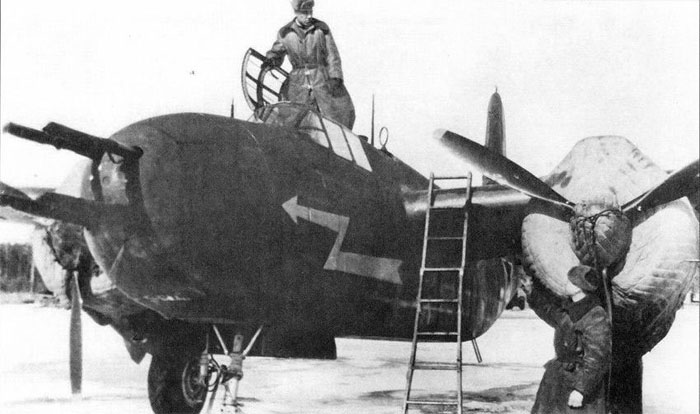
Above: this profile represents the look of a typical A-20G-1 of the 113 AP/27 GAP in winter 1943/44.
Tthe number 12 seems visible on a plane photographed on the background of another numbered 4; the serial is from the photo of another one from the same session, hypothetically the same plane. Common characteristics are the 20 mm guns on the nose, the red stars in eight positions, the white lightnings outlined in white and the white numbers on the rudder. Apart for this, the base livery is the usual U.S. one, with olive drab uppersurfaces probably with medium green blotches on the tail and wings, and the neutral grey undersurfaces.
Photo: Standard A-20G-1 of the 113 AP/27 GAP, probably in winter 1943/44. Codes are not readable.
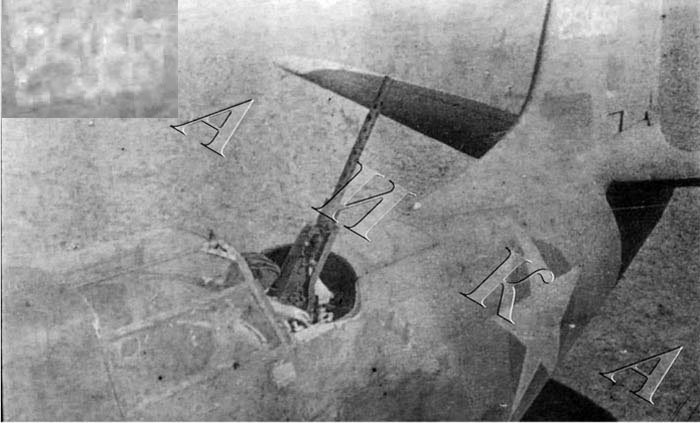
The photo of the tail, likely from the same session, let read the number 259583, possibly the one apparently numbered 12.
Images: archive Zaika
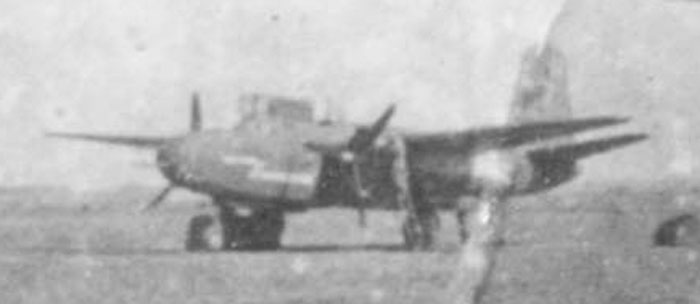
Image where a small 12 seems visible on the top of the rudder. This plane appears in the same photo session of the photo above and was supposed to be the same.
Image: archive Zaika
'White 3' with turret

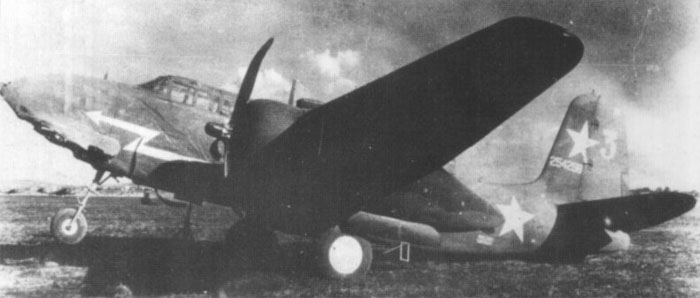
A-20G-15 DO white 3, s/n 254258, was a later addition to this unit, being of a series armed with 6 x 12,7 mm machine guns on the nose and, seems, converted with a UTK-1 turret armed with a UBT machine gun. The plane was photographed after a bad landing in Lviv region in 1944.
Another unusual characteristic of the plane was the navigator cockpit added just behind the pilot's cockpit.
The plane has the usual US livery of olive drab with blotches of medium green on the tail, wings and nacelles, and the usual mess of retouches made with US or Soviet paints.
Image from Red Stars 4 of Geust and Petrov, ed. Apali.
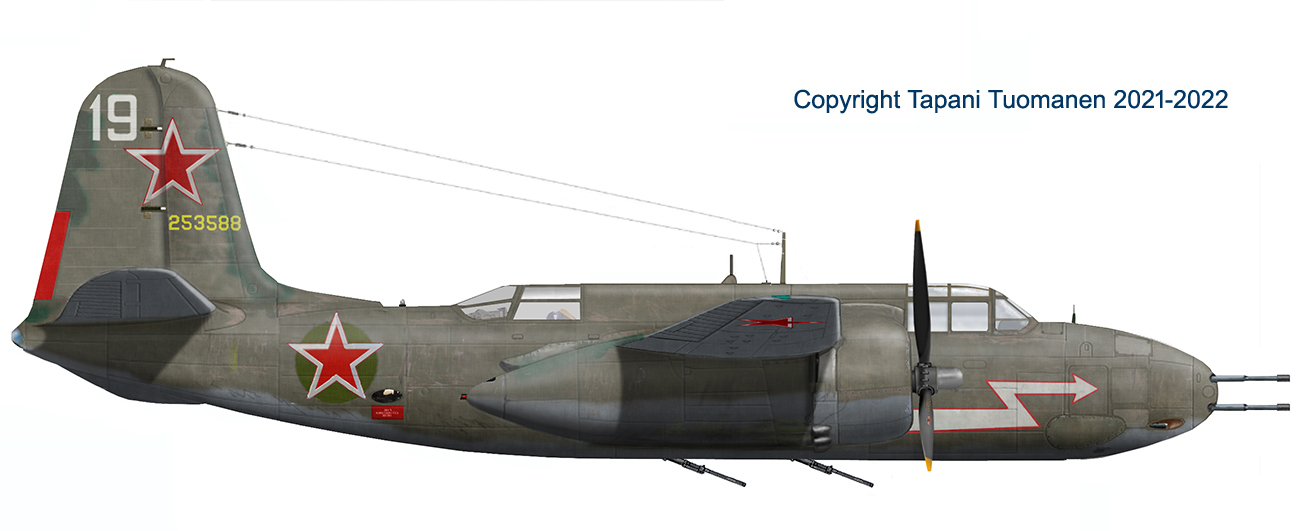
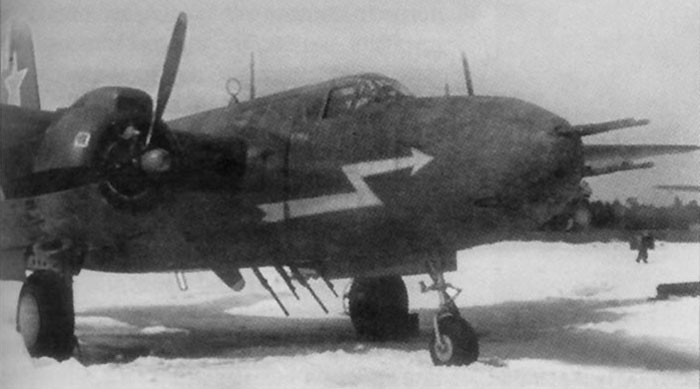

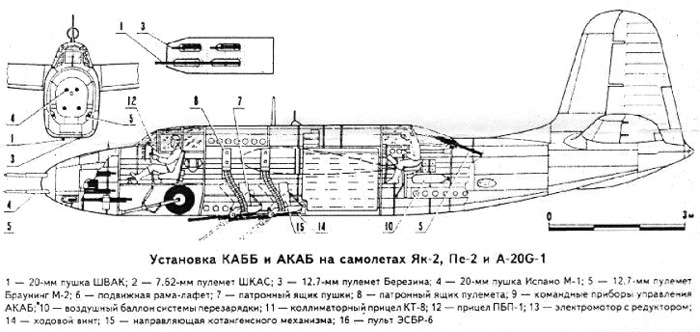
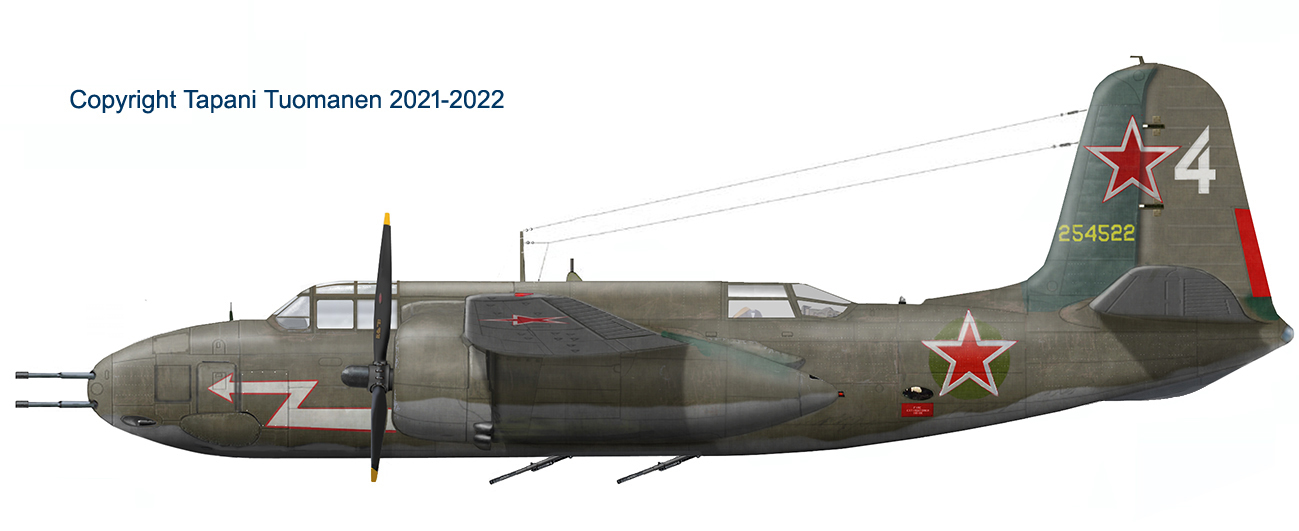
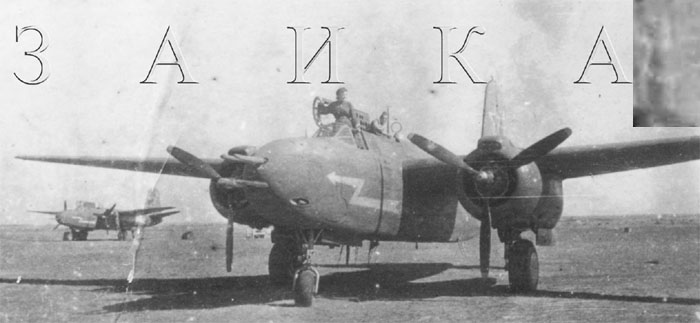

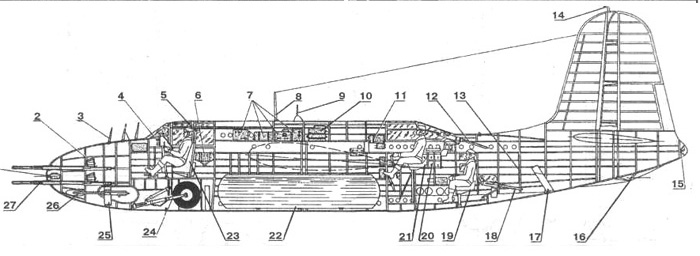
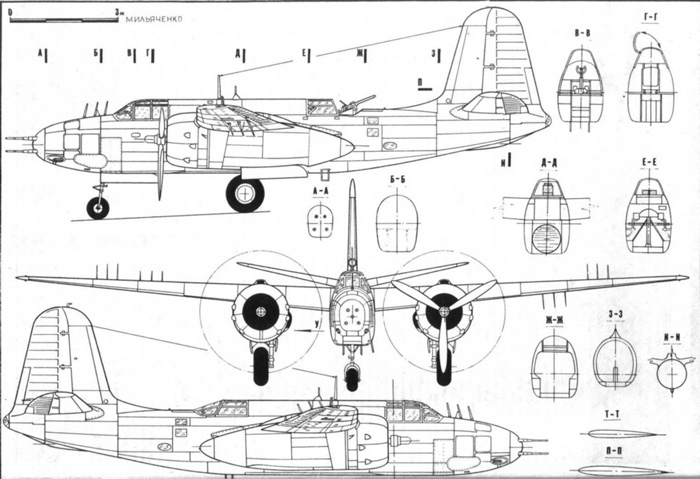
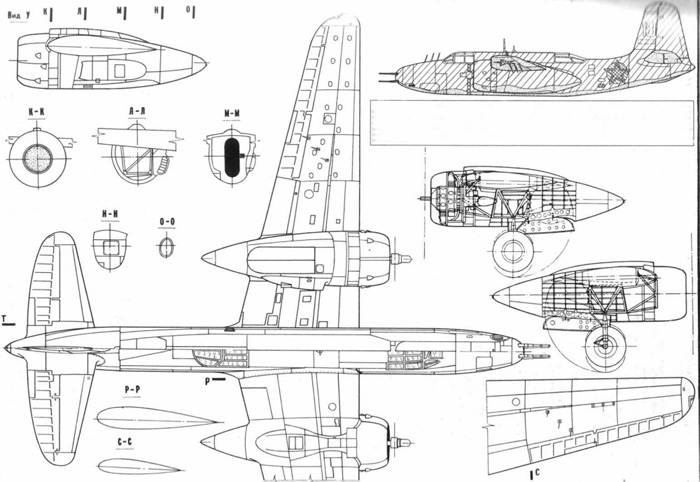
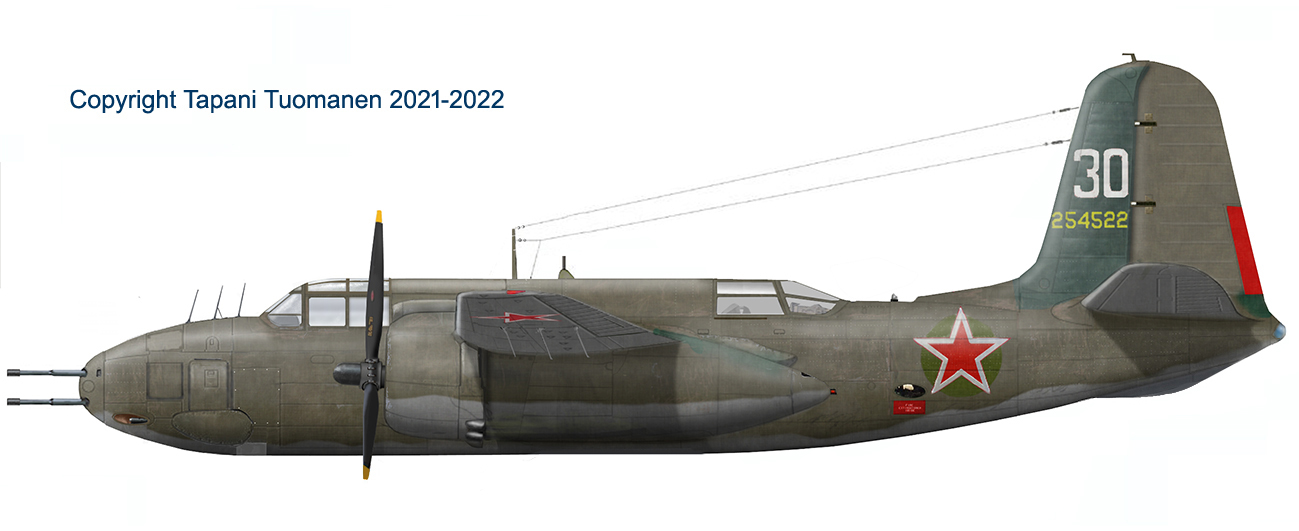
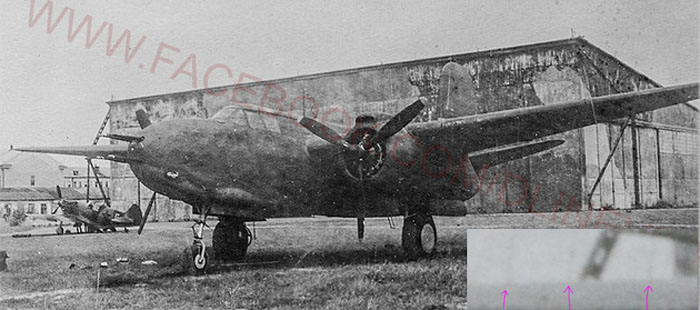
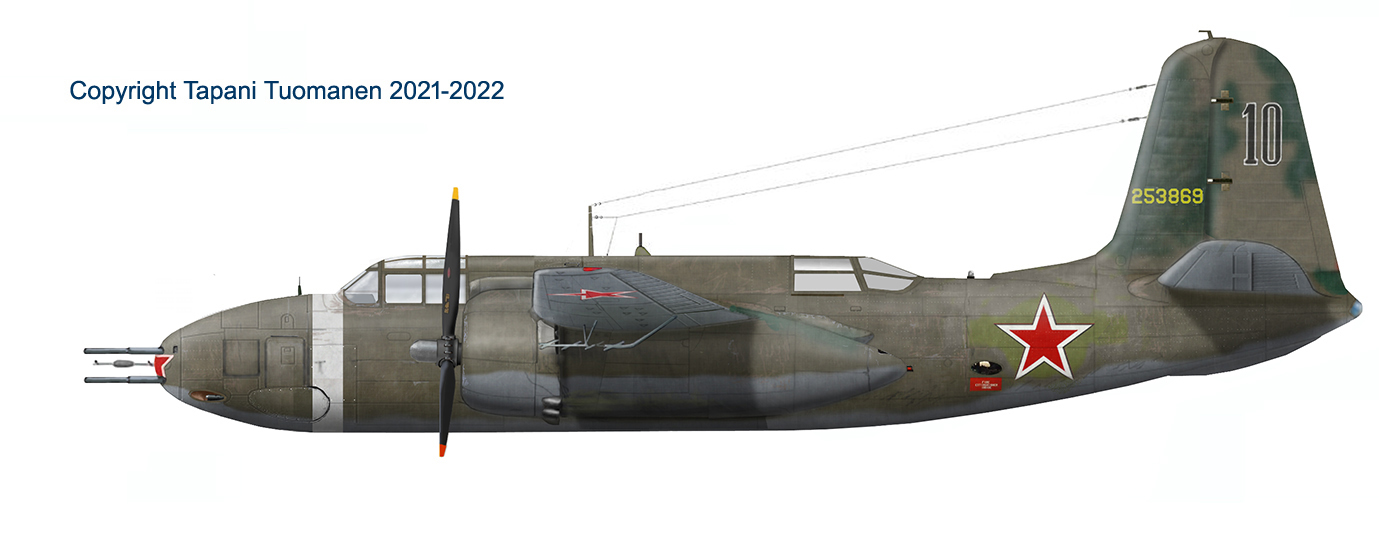
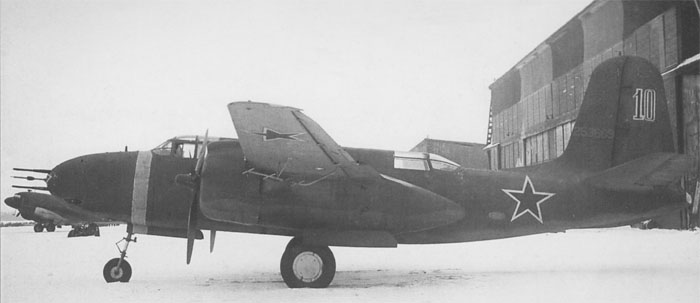
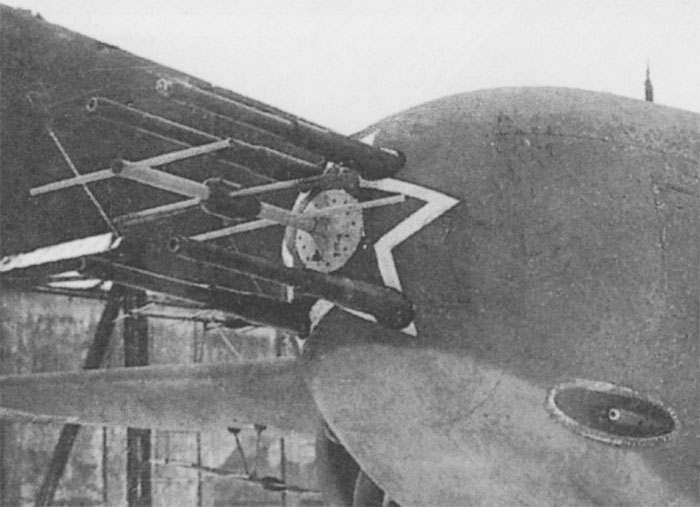
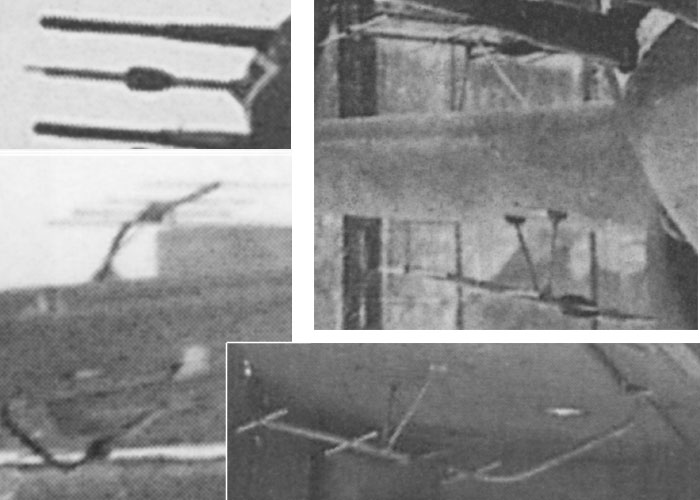
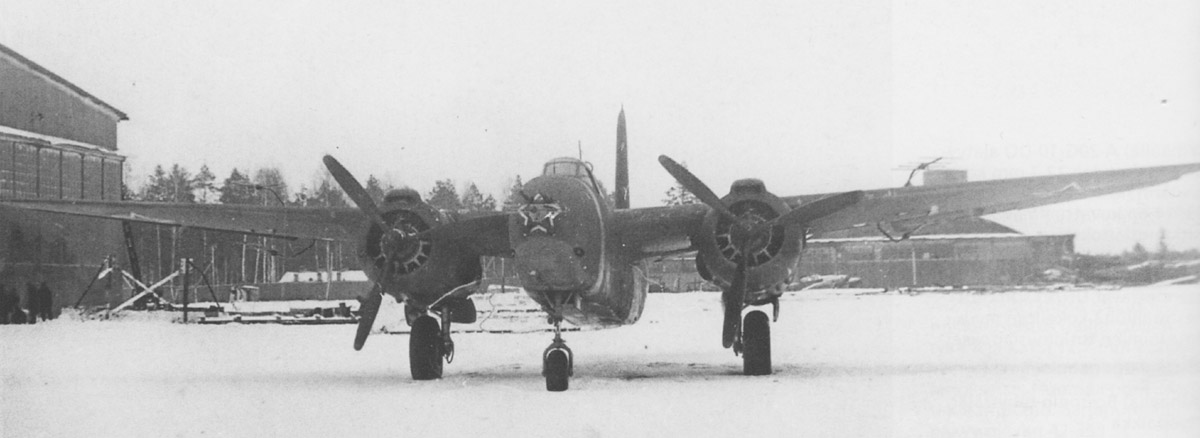 Images from Red Stars 4 of Geust and Petrov.
Images from Red Stars 4 of Geust and Petrov.